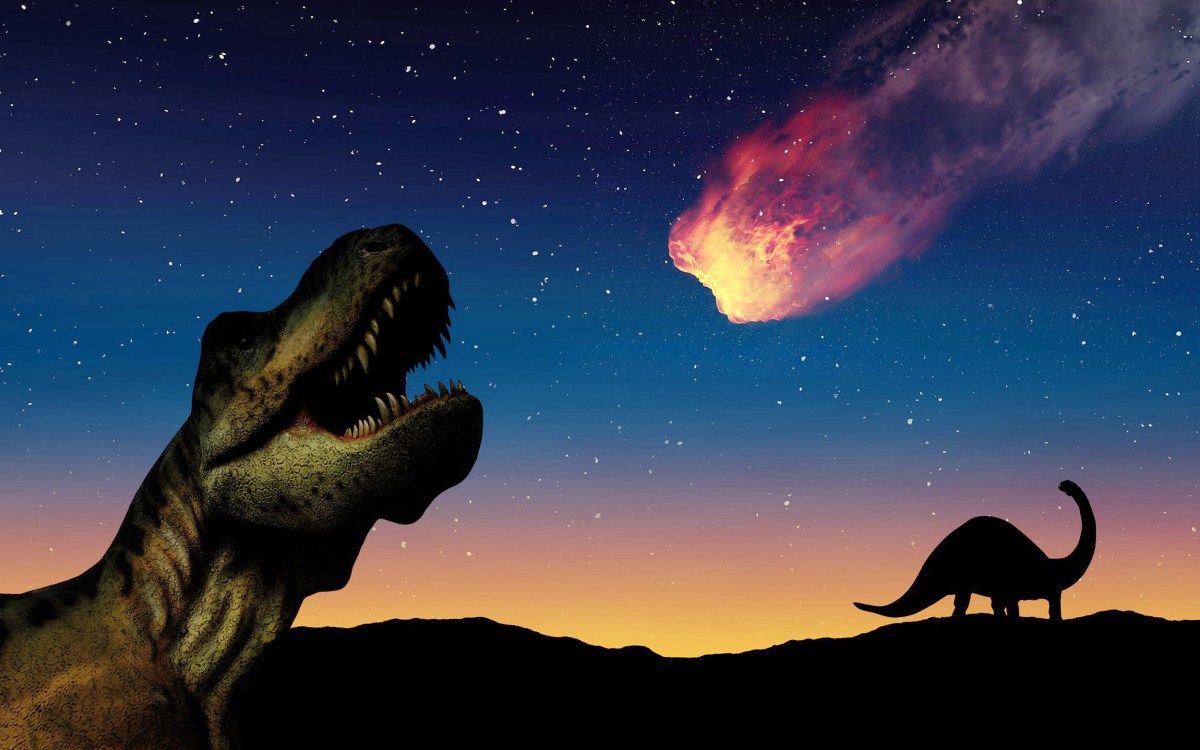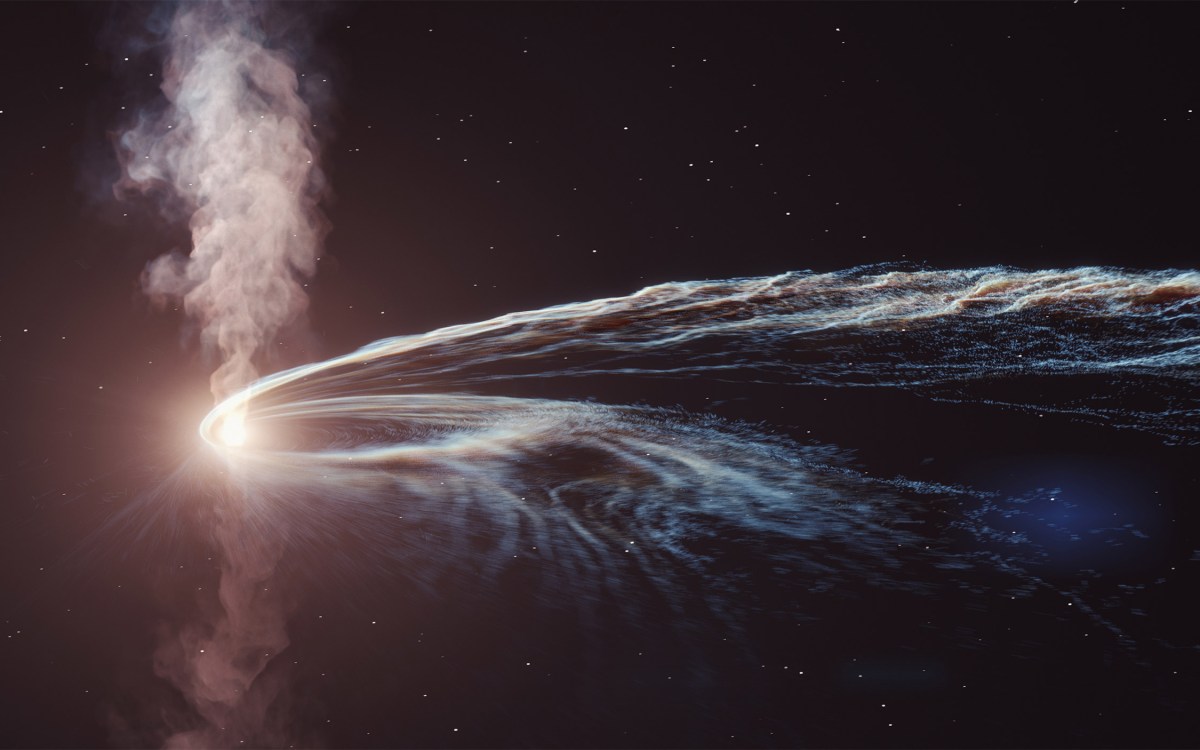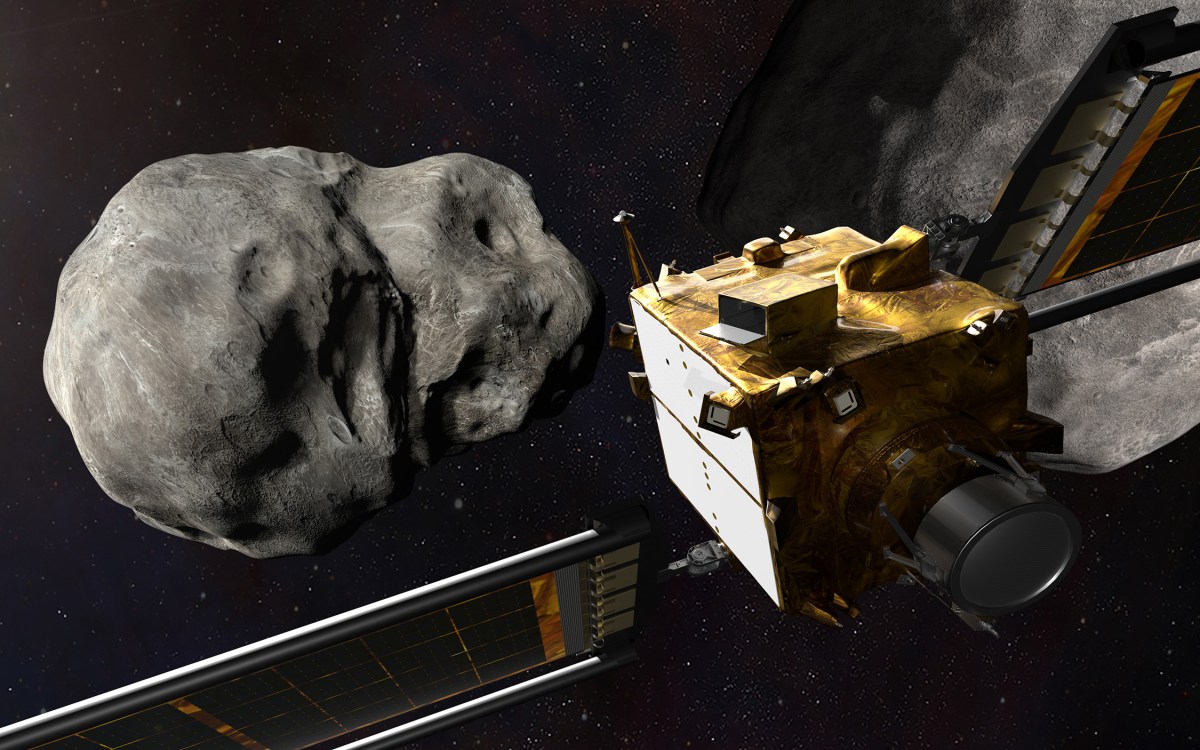How will the world end? Possibly with a belch, not a whimper.
Animation by R. Hurt (Caltech/IPAC)
Astronomers observe for first time a star consuming a planet, bolstering theory Earth will meet same fate — in about 5 billion years
When a star swallows a planet, does it belch? Leave crumbs? Get bigger? No one could say for sure because no one had witnessed it — until now.
Researchers from the Harvard & Smithsonian ǀ Center for Astrophysics, the Massachusetts Institute of Technology, the California Institute of Technology, and other institutions report in a study published today in Nature the first-ever sighting of a star engulfing — and obliterating — a planet.
“The majority of them will eventually suffer this fate,” said Morgan MacLeod, speaking of the thousands of planets, including Earth, orbiting other stars. Before stars die, these luminous creatures start to bloat, bulging up to a million times their original size and consuming everything within reach. Luckily, our own sun is stable — for now. But eventually, it too will balloon out, first gulping down Mercury, then Venus, and then Earth.
“If it’s any consolation, this will happen in about 5 billion years,” said MacLeod, a postdoctoral fellow of theoretical astrophysics at the CfA and one of the authors of the study.
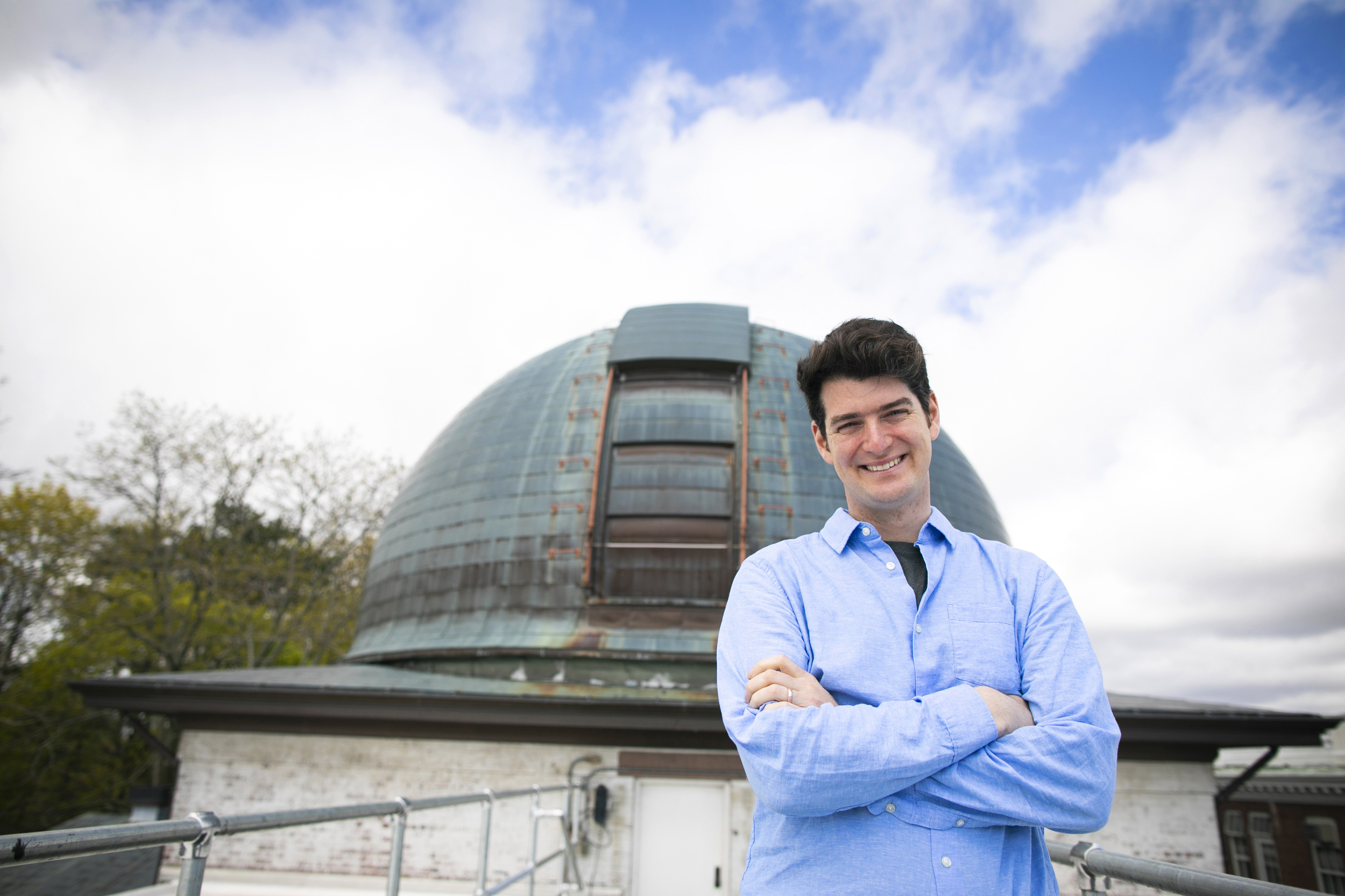
“This is really a central part of the story of the coevolution of stars and planets,” said Morgan MacLeod, a postdoctoral fellow of theoretical astrophysics at the CfA and one of the study’s authors.
Stephanie Mitchell/Harvard Staff Photographer
Scientists have long understood that stars were probably engulfing neighboring planets as they evolved but had thus far only witnessed the before and after. Now, they can say with much greater certainty that this is likely a regular occurrence, happening maybe even a couple of times a year in our solar system. And their observations could help explain when and how this consumption happens, how these meals impact stars, and what this could mean for the future of our own solar system.
“It’s a bit poetic that this is going to be the final fate of the Earth,” said Kishalay De, a postdoctoral researcher in MIT’s Kavli Institute for Astrophysics and Space Research and first author of the study.
In 2020, De was looking through data from the Zwicky Transient Facility — a Caltech-owned observatory in California — when he saw something that didn’t quite make sense. He was looking for signs of stellar eruptions — or novae — often caused when two orbiting stars rip chunks of mass from each other, causing bursts of light about 1,000 times brighter than the stars themselves. But one stellar firework De discovered was much dimmer, only 100 times brighter.
“And that’s when we realized it was nothing like a nova at all,” De said.

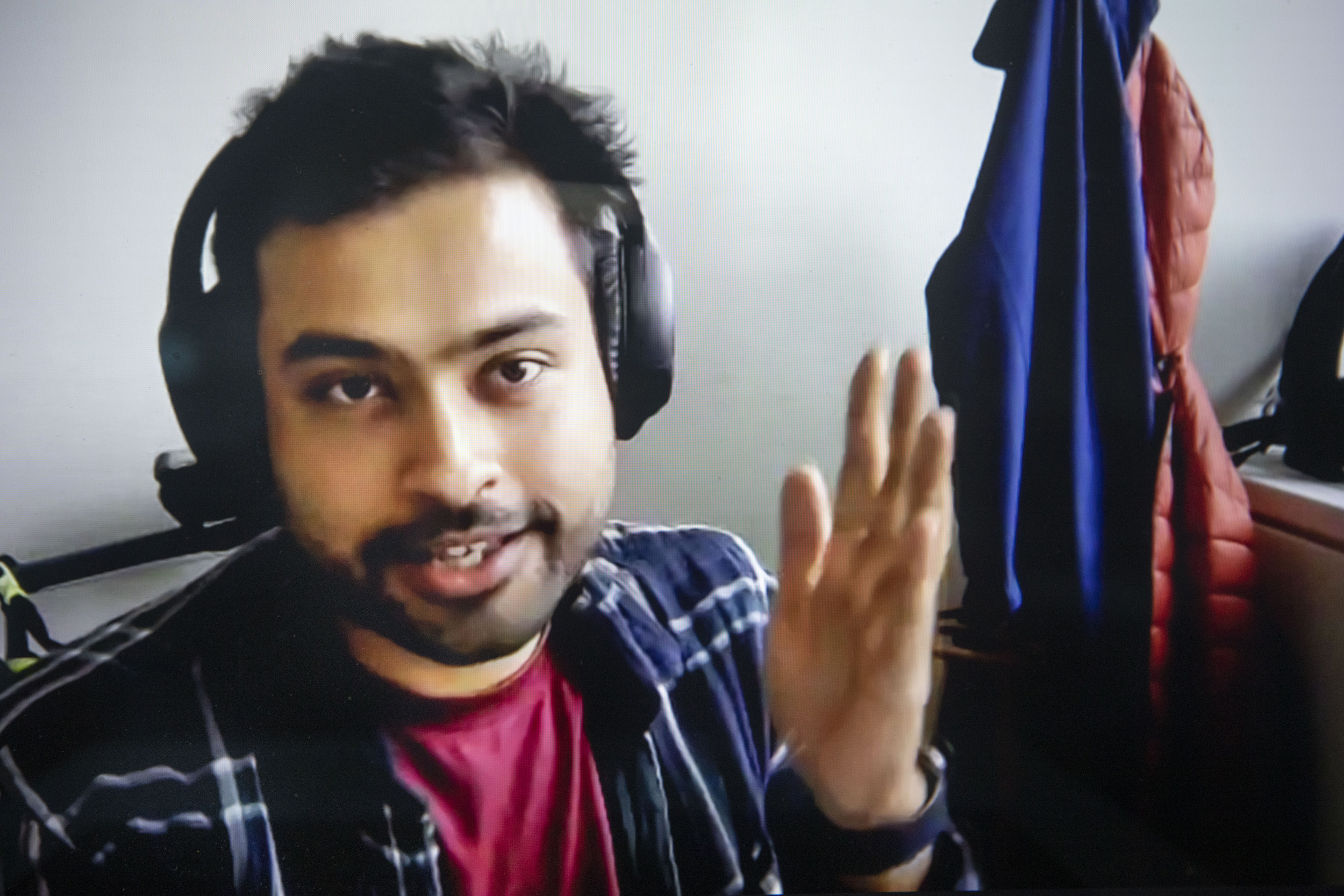
Mansi Kasliwal of Caltech and Kishalay De of MIT attend a virtual press conference with Harvard’s MacLeod.
Photos by Kris Snibbe/Harvard Staff Photographer
De suspected that he was witnessing a star absorbing a planet. And he had some evidence to back that up: Afterwards the star was surrounded by a cloud of dust — fragments of something rocky, not gaseous — as well as a cold gas. Novae expel hot gas, not cold.
So, to confirm the planet-eating star theory (which De admitted to doubting at first), he reached out to MacLeod, who specializes in designing computational models that can simulate stellar collisions in the safety of cyberspace. After reconstructing the crash, MacLeod found that everything — from brightness to energy emitted and mass expelled — was nowhere close to where it should be for two colliding stars. The energy alone was about 1,000 times smaller.
During the next couple of years, the team worked to rule out every other possibility. “There are plenty of other things in the sky that go boom,” De said. And that required cross-checking their observations with new data from the Keck Observatory in Hawaii, the Palomar Observatory, and NASA’s infrared space telescope, NEOWISE.
The NEOWISE data provided a big clue. With infrared, the team could get a better look at colder materials, including the dust expelled. And that data removed the last doubts: These were the crumbs of a star eating its planet.
“This is really a central part of the story of the co-evolution of stars and planets,” MacLeod said.
“It’s a bit poetic that this is going to be the final fate of the Earth.”
Kishalay De
Stars evolve over millions of years. In their senescence, they swell into red giants, which takes tens of thousands of years. “All of a sudden it goes wrong in a matter of minutes,” said MacLeod. Once their hungry star’s waistline edged close enough to the nearby planet, which was so close it orbited its host in less than a day, the planet was pulled in faster and faster, succumbing in a matter of days.
“I like to think of it as a big gulp,” said Mansi Kasliwal, a professor of astronomy at Caltech, who was part of the study.
Calculations revealed the star likely consumed a gas giant about the size of Jupiter. That planet was big enough to cause a bright, if not nova-quality, flash. But our own solar system might go down with little fanfare. When our sun gobbles up the closest small planets, that mini meal will cause almost no perturbation, MacLeod said. Our sun will barely burp.
Unlike most humans who gaze up at the stars, MacLeod, who fell for astronomy when he looked through his dad’s birding scope and spied Jupiter’s stripes, doesn’t see space as a static place. “There are all sorts of things that are changing all the time,” he said. The problem for astronomers is choosing which fireworks to explore.
A few years after the original spark, the team checked back on their planet-eating star, which has contracted to its original size. “Almost like the star ate the planet and forgot about it,” said De. But he and MacLeod can still learn more from this first-ever observation. De hopes to learn more about the consumed planet and see whether that planet polluted the star. MacLeod plans to use this fresh experimental data to develop more accurate models of gas dynamics. Those models could help scientists hunt down more planet-eating stars (which De and MacLeod absolutely plan to do, too) and explore questions like: What happens when a rocky planet is swallowed?
But De has loftier questions in mind, like, where do we come from? And where are we going? Now, at least, he has an answer to the second: “This is all gone in a flash when the sun decides to evolve.”



